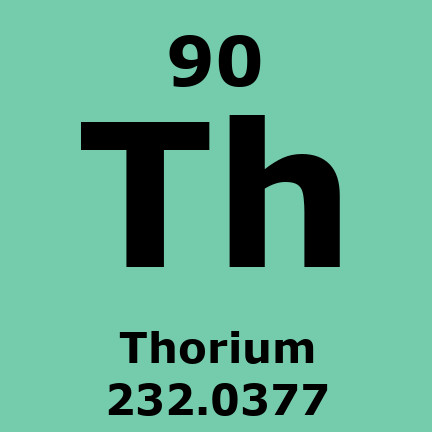Thorium (Substance) AKA Th

Thorium
1829 AD - 1898 AD
AKA Th
Thorium is silvery and tarnishes black when it is exposed to air, forming thorium dioxide; it is moderately hard, malleable, and has a high melting point. Thorium is an electropositive actinide whose chemistry is dominated by the +4 oxidation state; it is quite reactive and can ignite in air when finely divided.
All known thorium isotopes are unstable. The most stable isotope, 232Th, has a half-life of 14.05 billion years, or about the age of the universe; it decays very slowly via alpha decay, starting a decay chain named the thorium series that ends at stable 208Pb. On Earth, thorium and uranium are the only significantly radioactive elements that still occur naturally in large quantities as primordial elements.[a] Thorium is estimated to be over three times as abundant as uranium in the Earth's crust, and is chiefly refined from monazite sands as a by-product of extracting rare-earth metals.
Thorium's radioactivity was widely acknowledged during the first decades of the 20th century. In the second half of the century, thorium was replaced in many uses due to concerns about its radioactivity.
Thorium is still being used as an alloying element in TIG welding electrodes but is slowly being replaced in the field with different compositions. It was also material in high-end optics and scientific instrumentation, used in some broadcast vacuum tubes, and as the light source in gas mantles, but these uses have become marginal. It has been suggested as a replacement for uranium as nuclear fuel in nuclear reactors, and several thorium reactors have been built. Thorium is also used in strengthening magnesium, coating tungsten wire in electrical equipment, controlling the grain size of tungsten in electric lamps, high-temperature crucibles, and glasses including camera and scientific instrument lenses. Other uses for thorium include heat-resistant ceramics, aircraft engines, and in light bulbs.








